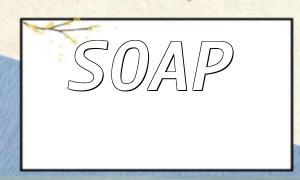PHP is a widely-used server-side scripting language extensively applied in web development. Error handling is a crucial aspect of development. PHP 8 introduces significant improvements, making error handling more powerful and flexible. This article uses practical code examples to help you gain a deeper understanding of PHP 8’s error handling mechanisms.
PHP 8’s error handling system mainly involves error reporting levels, the error suppression operator, exception handling, and custom error handlers.
Error reporting levels determine how PHP reports and manages errors. You can set this in the php.ini file via the error_reporting directive or by calling the error_reporting() function in your code. Common levels include E_ALL, E_ERROR, E_WARNING, and E_NOTICE. Understanding these levels is essential for debugging and error management.
The error suppression operator (@) is used to suppress error messages in specific code contexts. Although convenient, overusing it can hide real issues and complicate debugging.
Exception handling uses an object-oriented approach. When an error occurs, an exception object can be thrown and caught with try-catch blocks, allowing error information to propagate through layers of code and enabling better error management.
Custom error handlers let you define your own functions to replace the default error handling behavior, tailoring error processing to your application’s needs.
<?php error_reporting(E_ALL); <p>echo $undefinedVariable; // Notice: Undefined variable: undefinedVariable<br> include 'nonexistent-file.php'; // Warning: include(nonexistent-file.php): failed to open stream<br> ?>
In this example, we set the error reporting level to E_ALL and deliberately trigger an undefined variable notice and an include warning to observe full error output.
<?php
class CustomException extends Exception {}
<p>function test() {<br>
throw new CustomException("This is a custom exception");<br>
}</p>
<p>try {<br>
test();<br>
} catch (CustomException $e) {<br>
echo "Caught exception: " . $e->getMessage();<br>
}<br>
?>
Here, a CustomException class is defined and thrown inside a function. The exception is caught and handled in a try-catch block, demonstrating exception handling usage.
<?php
function customErrorHandler($errNo, $errMsg, $errFile, $errLine) {
echo "Custom error handler: $errMsg in $errFile on line $errLine";
}
<p>set_error_handler("customErrorHandler");</p>
<p>echo $undefinedVariable; // Custom error handler: Undefined variable: undefinedVariable in test.php on line 8<br>
?>
After registering a custom error handler function, error messages are formatted and output differently, replacing the default behavior.
Error handling is an indispensable part of PHP development. By mastering PHP 8’s error reporting levels, exception handling, and custom error handlers, and practicing with real code, you can improve your code’s robustness and maintainability. Hands-on experience is the best way to deepen understanding, so developers are encouraged to experiment frequently and become proficient with these mechanisms.









